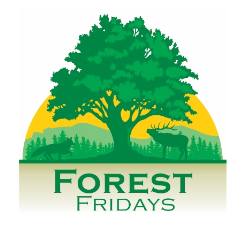Forest Fridays: Roadside treasures
By Chris Firestone
On a late summer day in Sproul State Forest, a colleague and I were monitoring for invasive plants from a vehicle along some state forest roads. We slowly drove with windows down and eyes peeled for invasive species that don’t belong. Oftentimes, due to previous disturbance, these species have taken hold and we do everything in our power to rapidly eradicate them. Although we often find what we don’t want to see, it is amazing how this level of scrutiny reveals many hidden native plant surprises.
On this particular trip to the Sproul, the goldenrods, asters, and joe-pye weeds were blooming. The orange and yellow touch-me-nots (Impatiens capensis and I. pallida) or jewelweed in moist ditches were blooming and attracting pollinators and hummingbirds.
Even the purple flowering raspberry (Rhubus odorata) was holding on to blooms amid the berries in various stages of ripeness. We observed seven great spangled fritillary butterflies foraging for nectar on joe-pye weed (Eutrochium fistulosum), flitting about from one flower to another.
Photo – Great spangled fritillary on low-pye-weed
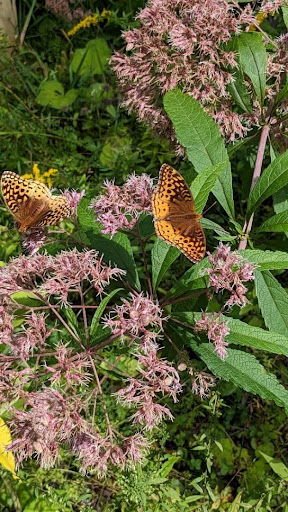
We spotted a few turtlehead (Chelone glabra) plants in almost full bloom in a wet area with a shallow ditch. The individual flowers of turtlehead do look like a cluster of pink turtle heads.
The reproductive parts and nectar are hidden deep within the corolla, and for a pollinator to get inside, it needs to push apart the flower and wiggle in.
Photo: Turtlehead almost in full bloom
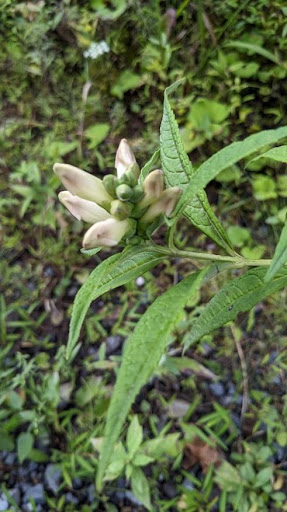
A similar flower that isn’t open for a pollinator is bottle gentian (Gentiana clausa). That day in the Sproul we found a roadside population and jumped out to get a closer look.
A bumblebee was busily checking the entrance to these flowers and would stop to wiggle its way into the flower until all that was sticking out was its back legs and butt (okay, entomologically speaking it was the end of the abdomen).
Photo: Bottle gentian with bumblebee
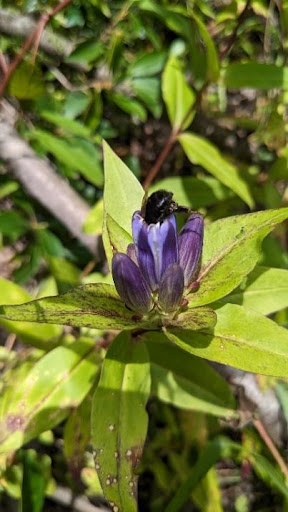
Other botanical treasures exist on state forest roads. For example, wild lupine (Lupinus perennis) (listed Pennsylvania Rare) is a native perennial found in several districts and the subject of a study on the impact of prescribed fire on these populations.
Photo: Wild lupine in Tiadaghton State Forest
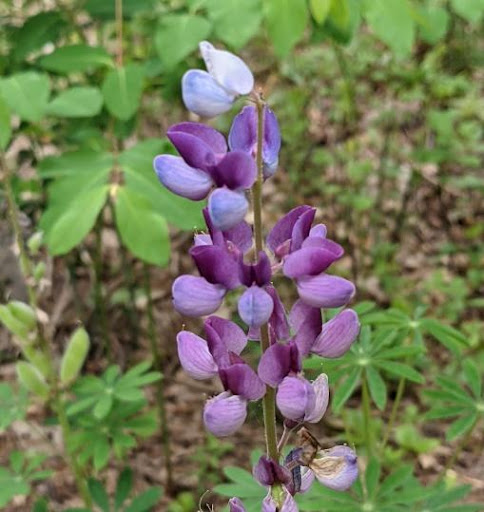
Sometimes it’s an unusual form in an otherwise common species that catches our eye. A population of double flowered sharp-leaved hepatica (Hepatica acutiloba) was recently documented along a state forest road in Tioga State Forest.
Photo: Double-flowered sharp-leaved hepatica, courtesy of Mark Simonis
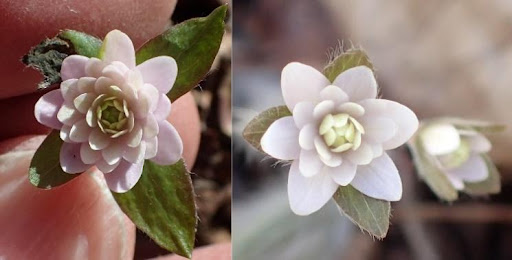
Or, it could just be a combination of plant species that add beauty to a stretch of road. A patch of blue-stemmed goldenrod (Solidago caesia), Christmas fern (Polystichum acrostichoides), and blue wood aster (Symphyotrichum cordifolium) caught my eye on an early fall day along a road in Loyalsock State Forest.
What treasures will you find along state forest roads if you take your time?
Photo: Asters, ferns and goldenrods in Loyalsock State Forest
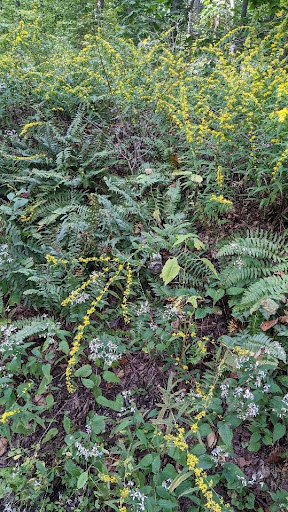
About the Author: Chris Firestone
Chris Firestone is a botanist with 28 years in the Bureau of Forestry, working to conserve native wild plants in Pennsylvania through policy, education, and management of habitat and invasive species. She lives in Potter County and enjoys gardening, foraging, hiking and camping.
